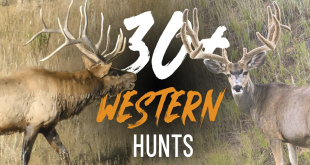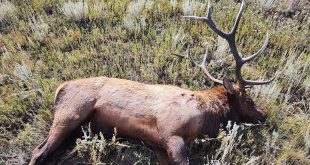
When people think of the old West images of weathered cowboys like Vigo Mortensen in “Hidalgo” and native tribes of horse oriented hunters roaming the desert on horseback looking for buffalo are the first thing that comes to mind. Often these memories are etched as a mural, that at one point or another, the person probably saw in a dental office or museum. Let’s call a spade a spade, the horse often makes the image what it is, and therein lies the conundrum of what we face with “wild” horses. Perception is king.
The perception and deep ties that our culture has to horses are what make managing wild horses so incredibly tough to navigate. Emotion in our current cultural state trumps reality and sound judgment and in the case we are discussing today it certainly has pervaded to the point of serious damage to ecosystems. Hunting wild horses isn’t in the cards, large scale round ups aren’t working well anymore, and mass sterilization leaves the horses in the ecosystems for many years to continue their destruction. Can you imagine the outcry from our culture from otherwise “reasonable” people who would protest a mass culling of overpopulated wild horses?
I think of an older couple who moved to Wyoming for a time to work as missionaries in our region. In their off time they took the Wild Horse Loop as often as they could to enjoy the animals and were sure to bring every relative and friend along with them. Once when I mentioned that the horse population was hurting mule deer and antelope habitat in a major way you could have heard a pin drop. I didn’t even mention that efforts were being made to bring the population down through chemical sterilization and mass herding. This couple was otherwise very pleasant to be around and honestly level-headed. However, trying to explain to them that the wild horses are part of the reason that antelope and mule deer are dying this winter wasn’t going to make sense.
This isn’t just limited to my home state of Wyoming by any means. Without going into a master’s level thesis of research I would submit that Nevada big game animals might be the ones getting the strongest kick to the guts from a population of horses that is soaring over objective. Going through Nevada’s unit and regional descriptions in February it was the same song over and over. Destruction of prime elk and mule deer habitat as wild horses roam the desert, creating the need for massive habitat restoration and replanting. Some of my contacts there told me that the horses are starting to look malnourished in some places, competing with each other for scarce food. NDOW documented this as well with reports that the horses are moving to higher elevations outcompeting even the hearty elk.
With all this doom and gloom the real question is, what do we do? Mass roundups are no longer providing the needed drops in population to keep them on the landscape without doing harm. Sterilization efforts can’t keep up and even if a young horse is sterilized they can live for decades, those of you who own horses do the math on just how much food they can consume.
Let me also state this, before I get any further into this blog. I have friends who break and ride wild horses. They have turned into excellent pack animals, I have ridden them and would ride them deep into the Wyoming wilderness without giving it another thought. I am no horse expert and I will never claim to be one as any of you who are, would sniff me out in no time. That being said, another piece of this conundrum is that there just aren’t enough people with the knowledge base left to break the older horses that are collected in BLM roundups. This creates a financial burden for the BLM as they house the adult wild horses sending all of the young ones off to be adopted.
People who live in horse culture families joke about taking old nags out to the glue factory. In this setting though, with the cultural outrage, it’s tough to talk about the issue, but there is no way around it. Wild horses are damaging the landscape in a big way and with the winter we have had is going to bring even more perspective into the situation. Do we want mule deer, elk and pronghorn on the landscape or destructive horses?
How do we handle this tough conversation? I honestly don’t know, but what I do know is that we need solutions and we need them sooner rather than later.
 Eastmans' Official Blog | Mule Deer, Antelope, Elk Hunting and Bowhunting Magazine | Eastmans' Hunting Journals
Eastmans' Official Blog | Mule Deer, Antelope, Elk Hunting and Bowhunting Magazine | Eastmans' Hunting Journals





The wild horses are also a big concern in Idaho, I have personally seen the damage they do to the environment and how they compete with Deer, Elk and other wild animals that are native to the area at desert springs where there is not much water and food resources. These so called wild horses are very territorial and can also bully native animals at these watering holes and for food.
The biggest KICKER is the taxpayer has to provide for these horses, some are even shipped to the Midwest to graze before they are adopted.